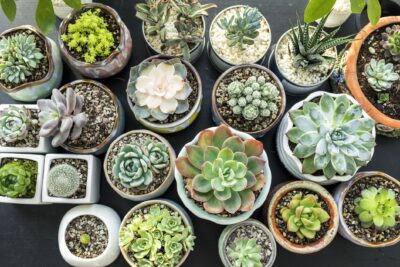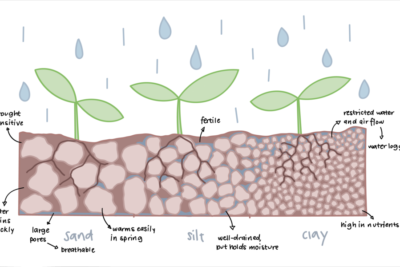
Exploring the Origins of Succulents: Unveiling their Native Habitats

Succulents have become increasingly popular in recent years, with their unique and eye-catching appearance making them a favorite among plant enthusiasts. However, many people may not be aware of the origins of these fascinating plants. Succulents are not just decorative houseplants; they are a diverse group of plants that have adapted to survive in some of the harshest environments on Earth.
We will delve into the native habitats of succulents and explore the fascinating adaptations that allow them to thrive in these extreme conditions. We will take a closer look at the different types of succulents and their geographical distribution, from the arid deserts of Africa and the Americas to the rocky slopes of mountain ranges. Additionally, we will discuss the importance of understanding the natural habitats of succulents for their successful cultivation and care, as well as the conservation efforts needed to protect these unique ecosystems.
- One solution is to conduct research on succulent species and their natural habitats
- Another option is to visit botanical gardens or plant nurseries that specialize in succulents
- A third solution is to join online forums or social media groups dedicated to succulent enthusiasts, where you can learn about their origins from experienced growers
- You can also consult books or online resources that provide information on the native habitats of different succulent species
- Another approach is to reach out to experts in the field, such as botanists or horticulturists, who can provide insights into the origins of succulents
- Visiting succulent exhibitions or plant shows can also give you a chance to speak with experts and learn more about their native habitats
- Keeping a close eye on succulent trends and news can provide valuable information on the origins of different species
- Finally, experimenting with growing succulents from seeds or cuttings can give you firsthand experience with their growth patterns and natural habitats
- Frequently Asked Questions
One solution is to conduct research on succulent species and their natural habitats
Succulents have gained immense popularity in recent years, with their unique and beautiful forms adorning homes, offices, and gardens. While we appreciate their aesthetic appeal, it is equally important to understand their origins and the environments they naturally thrive in. By exploring the native habitats of succulents, we can gain valuable insights into their care, cultivation, and conservation.
1. Desert Regions:
Succulents are well-known for their ability to survive in harsh desert environments. Many succulent species originate from desert regions such as the Sonoran Desert in North America, the Namib Desert in Africa, and the Atacama Desert in South America. These areas are characterized by arid conditions, extreme temperatures, and minimal rainfall. Succulents native to desert regions have adapted to store water in their leaves, stems, or roots, enabling them to withstand long periods of drought.
2. Coastal Areas:
 Are Air Plants Succulents? Exploring Tillandsia Classification
Are Air Plants Succulents? Exploring Tillandsia ClassificationSome succulents are indigenous to coastal regions, where they face a different set of challenges. Coastal succulents, like those found in South Africa's Cape Peninsula or California's coastal areas, have adapted to thrive in sandy, well-drained soils and endure salty sea spray. These succulents often have fleshy leaves or specialized structures that help them retain water and tolerate the salt content in the air and soil.
3. Mountainous Terrains:
Contrary to popular belief, not all succulents come from arid regions. Some species are found in mountainous terrains with cooler temperatures and higher elevations. For example, the Andes Mountains in South America are home to a diverse range of succulents that have adapted to survive in rocky, alpine environments. These mountain succulents are often more cold-tolerant and have unique growth habits compared to their desert-dwelling counterparts.
4. Tropical Rainforests:
While succulents are commonly associated with dry environments, there are also succulent species that thrive in tropical rainforests. These succulents, like those found in parts of Southeast Asia or Central America, have adapted to the high humidity and dense shade of the rainforest floor. They often possess broader leaves and employ different strategies to capture and retain moisture in their environment.
Understanding the native habitats of succulents not only enhances our appreciation for their resilience and adaptability but also provides us with essential knowledge for their proper care and cultivation. By recreating their natural conditions, we can ensure that these fascinating plants thrive in our own environments while also contributing to their conservation.
Another option is to visit botanical gardens or plant nurseries that specialize in succulents
 Exploring the Role and Function of Aerial Roots in Succulent Plants
Exploring the Role and Function of Aerial Roots in Succulent PlantsIf you're fascinated by succulents and want to learn more about their origins, a fantastic way to immerse yourself in their native habitats is by visiting botanical gardens or plant nurseries that specialize in these unique plants. These settings provide a perfect opportunity to explore the diverse range of succulent species and gain valuable insights into their natural environments.
Botanical gardens are renowned for their extensive collections of plants from around the world, including succulents. These gardens recreate different ecosystems and showcase a wide variety of succulent species, allowing visitors to admire and appreciate their beauty up close. Walking through these gardens feels like embarking on a journey to the native habitats of succulents, as each section represents a different region or climate where these plants thrive.
Not only do botanical gardens offer a visual treat, but they also provide educational resources, such as informational plaques and guided tours, that shed light on the origins and unique characteristics of succulents. Expert staff members are often available to answer any questions and share their knowledge, making it a great opportunity to deepen your understanding of these fascinating plants.
Plant nurseries that specialize in succulents are another excellent option for succulent enthusiasts seeking to learn about their native habitats. These nurseries often source their plants from various regions and can provide valuable information on the specific conditions under which each species thrives. Exploring the different sections of the nursery allows you to witness the diversity within the succulent kingdom and observe how different species adapt to different environments.
Visiting these nurseries also offers the chance to engage with knowledgeable staff who can guide you in selecting the right succulents for your own garden. They can provide insights into the care and maintenance required for each species based on their native habitats, ensuring that you can recreate a suitable environment for your succulents to thrive.
Whether you choose to visit a botanical garden or a specialized plant nursery, both options offer an immersive experience into the origins of succulents. They allow you to witness the beauty and diversity of these plants while learning about their native habitats and the conditions necessary for their growth. So, go ahead and plan a visit to one of these fascinating places to enhance your understanding and appreciation of succulents!
 Non-Cacti Succulents: Identifying Succulent Varieties beyond Cacti
Non-Cacti Succulents: Identifying Succulent Varieties beyond CactiIf you are a succulent lover and want to delve deeper into the origins of these fascinating plants, joining online forums or social media groups is a great way to expand your knowledge. These communities bring together experienced growers from around the world who are passionate about succulents.
By joining these platforms, you will have the opportunity to interact with fellow succulent enthusiasts and learn from their experiences. Many members of these communities have extensive knowledge about the native habitats of various succulent species.
Through discussions and interactions, you can uncover valuable insights about the origins of succulents. Growers often share information about the specific regions where different succulent species are commonly found in the wild.
These online platforms also provide a platform for sharing photos and stories of succulents in their natural habitats. By browsing through these visual resources, you can get a better understanding of the diverse environments in which succulents thrive.
Additionally, online forums and social media groups often organize virtual events, such as webinars and Q&A sessions, where experienced growers share their expertise. Attending these events can give you the opportunity to directly ask questions about the origins of specific succulent species and gain valuable insights from the experts.
It is important to note that while online communities can be a valuable source of information, it is always recommended to fact-check and verify the information you receive. Not all information shared in these groups may be accurate, so it's essential to cross-reference with reliable sources.
 Find the Perfect Succulent Plant Identifier for Easy Identification
Find the Perfect Succulent Plant Identifier for Easy IdentificationJoining online forums or social media groups dedicated to succulent enthusiasts can be a fruitful endeavor for those interested in exploring the origins of succulents. Through these platforms, you can connect with experienced growers, learn about the native habitats of various species, and gain valuable insights into the fascinating world of succulents.
You can also consult books or online resources that provide information on the native habitats of different succulent species
When it comes to succulents, understanding their native habitats can provide valuable insights into their care and cultivation. Knowing where a particular succulent originates from can help you recreate similar conditions in your own garden or indoor space, ensuring optimal growth and thriving plants.
One way to explore the origins of succulents is by consulting books dedicated to the subject. Many botanical and horticultural publications offer detailed information on the native habitats of various succulent species, along with descriptions of the environmental conditions they thrive in. These resources can provide a comprehensive overview of the geographical regions where succulents are found in the wild, giving you a deeper understanding of their natural habitats.
In addition to books, the internet is a treasure trove of information on succulent habitats. Numerous online resources, such as botanical websites, forums, and even dedicated succulent enthusiast blogs, offer valuable insights into the native habitats of different succulent species. These online platforms often feature articles, photographs, and even personal experiences shared by enthusiasts who have explored the natural environments where succulents grow.
Benefits of understanding native habitats:
- Optimal care: By understanding the native habitats of succulents, you can replicate similar conditions in your own garden or indoor space, ensuring that your plants receive the right amount of sunlight, water, and temperature.
- Species-specific knowledge: Each succulent species has unique preferences and requirements. By knowing their native habitats, you can better cater to their individual needs and provide suitable growing conditions.
- Species selection: Understanding native habitats can help you make informed choices when selecting succulents for your collection. If you live in a particular climate, you can focus on species that naturally thrive in similar conditions.
- Conservation efforts: Exploring the native habitats of succulents raises awareness about the importance of preserving these fragile ecosystems. By understanding the conditions necessary for their survival, we can contribute to conservation efforts and help protect these unique plant species.
By delving into the origins of succulents and unveiling their native habitats, you can gain a deeper appreciation for these fascinating plants. Whether you choose to consult books or explore online resources, the knowledge you gain will enhance your ability to care for and cultivate succulents, creating a thriving and beautiful collection.
Another approach is to reach out to experts in the field, such as botanists or horticulturists, who can provide insights into the origins of succulents
 Find Your Perfect Succulent with Our PDF Identification Chart
Find Your Perfect Succulent with Our PDF Identification ChartWhen it comes to understanding the native habitats of succulents, seeking the knowledge of experts in the field can be invaluable. Botanists and horticulturists have dedicated their lives to studying plants, including succulents, and possess a wealth of information about their origins.
By consulting with these experts, you can gain a deeper understanding of the specific regions and environments where succulents are naturally found. They can provide insights into the geological, climatic, and ecological factors that have shaped the evolution of these fascinating plants.
One way to seek expert advice is by reaching out to local botanical gardens, universities, or research institutions that focus on plant sciences. These establishments often have knowledgeable staff members who are passionate about succulents and can offer valuable insights into their native habitats.
Benefits of consulting with experts:
- Accurate Information: Experts can provide accurate and up-to-date information about the native habitats of succulents, ensuring that you have reliable data for your research.
- In-depth Knowledge: By tapping into the expertise of botanists or horticulturists, you can gain a deeper understanding of the ecological relationships and adaptations of succulents in their natural environments.
- Access to Resources: Experts often have access to scientific papers, studies, and databases that may not be readily available to the general public. This can greatly enhance your research and broaden your understanding of succulent origins.
- Networking Opportunities: Consulting with experts can also provide networking opportunities within the scientific community. This can lead to collaborations or connections with other researchers who share your interest in succulent origins.
Remember to approach experts with respect and appreciation for their time and knowledge. Be prepared with specific questions or topics you'd like to discuss to make the most of your consultation.
Visiting succulent exhibitions or plant shows can also give you a chance to speak with experts and learn more about their native habitats
Understanding the Importance of Native Habitats
When it comes to succulents, understanding their native habitats is crucial for their successful cultivation. Each succulent species has evolved to thrive in a specific environment, and replicating those conditions in your own garden is key to their survival.
Visiting succulent exhibitions or plant shows provides a unique opportunity to speak with experts who have extensive knowledge about these plants and their native habitats. By engaging in conversations with these experts, you can gain valuable insights into the conditions under which succulents grow naturally.
 Unveiling the Truth Behind Leather Petal Succulents: Real or Myth?
Unveiling the Truth Behind Leather Petal Succulents: Real or Myth?Exploring Succulent Native Habitats
Succulents are native to a diverse range of regions around the world. Some are found in arid desert landscapes, while others thrive in tropical rainforests or even alpine environments. By exploring these native habitats, you can gain a deeper appreciation for the adaptability and resilience of succulent plants.
Native habitats of succulents often offer awe-inspiring landscapes and unique ecological systems. For example, you may come across succulents growing in rocky crevices, clinging to cliffs, or nestled among other plants in a diverse ecosystem. Such observations can inspire you to recreate similar conditions in your own garden, enhancing the natural beauty of your succulent collection.
Taking Inspiration from Native Habitats
Studying the native habitats of succulents can provide you with inspiration for designing your own succulent garden. By incorporating elements from these habitats, you can create a visually appealing and environmentally appropriate space for your plants.
Consider replicating the soil composition, drainage conditions, and light levels found in the native habitats of your favorite succulent species. This attention to detail will ensure that your plants receive the necessary care and thrive in a familiar environment.
Preserving Succulent Native Habitats
Lastly, understanding the native habitats of succulents can make us more aware of the importance of conserving these environments. Many succulent species are threatened in their natural habitats due to habitat destruction, climate change, and illegal collection.
By learning about and appreciating the native habitats of succulents, we can actively contribute to their conservation. Supporting organizations that work towards preserving these habitats or growing succulents from ethically sourced seeds can help ensure the long-term survival of these remarkable plants.
Keeping a close eye on succulent trends and news can provide valuable information on the origins of different species
 Discover the Fascinating Succulent Resembling an Artichoke
Discover the Fascinating Succulent Resembling an ArtichokeSucculents have gained immense popularity in recent years, becoming a staple in home decor, gardens, and even wedding arrangements. With their unique shapes, vibrant colors, and low maintenance requirements, it's no wonder that succulents have captured the hearts of many plant enthusiasts.
If you're an avid succulent lover, you may find yourself wondering about the origins of these fascinating plants. Where do they come from? How did they adapt to their native habitats? Exploring the native habitats of succulents can provide valuable insights into their growth patterns, care requirements, and overall behavior.
The Native Habitats of Succulents
Succulents are known for their ability to store water in their leaves, stems, or roots, allowing them to survive in arid environments where water is scarce. These unique plants can be found in various regions around the world, each with its own distinct climate, soil conditions, and natural flora.
Some of the most well-known native habitats for succulents include:
- The deserts of North America, such as the Mojave Desert and Sonoran Desert.
- The arid regions of Africa, including the deserts of Namibia and South Africa.
- The mountainous regions of Central and South America, like the Andes Mountains.
- The Mediterranean region, encompassing countries like Spain, Italy, and Greece.
Within these native habitats, succulents have adapted to survive in extreme conditions, including intense heat, limited rainfall, and poor soil quality. Their unique ability to retain water and withstand drought makes them well-suited to these challenging environments.
The Significance of Native Habitats
Understanding the native habitats of succulents is essential for successfully cultivating and caring for these plants. By mimicking their natural environments, you can create optimal growing conditions and ensure the health and longevity of your succulents.
For instance, if you have succulents native to desert regions, such as cacti, they will thrive in well-draining soil and prefer bright sunlight. On the other hand, succulents native to Mediterranean climates may require more moderate temperatures and can tolerate slightly more moisture.
 Discover Beautiful Flowering Succulents: Learn How to Identify Them
Discover Beautiful Flowering Succulents: Learn How to Identify ThemBy considering the native habitats of succulents, you can also gain a deeper appreciation for their beauty and resilience. Knowing that these plants have evolved to survive in harsh conditions adds to their allure and makes them even more captivating.
So, next time you find yourself admiring a succulent, take a moment to research its native habitat. Understanding where it comes from will not only enhance your knowledge but also help you create an environment where it can thrive.
Remember, the origins of succulents are as diverse and fascinating as the plants themselves. Exploring their native habitats can unveil a world of discovery and appreciation for these incredible species.
Finally, experimenting with growing succulents from seeds or cuttings can give you firsthand experience with their growth patterns and natural habitats
When it comes to succulents, one of the most fascinating aspects is their varied native habitats. These unique plants have evolved to thrive in different parts of the world, each with its own set of environmental conditions and challenges.
If you are curious about the origins of succulents and want to learn more about their native habitats, you can embark on a journey of exploration. By experimenting with growing succulents from seeds or cuttings, you can gain firsthand experience with their growth patterns and the conditions they naturally thrive in.
Why is understanding native habitats important?
Understanding the native habitats of succulents is crucial for their successful cultivation. Different species of succulents have adapted to specific environments over thousands of years. By replicating their natural conditions as closely as possible, you can provide the ideal growing environment for your succulents, ensuring their health and longevity.
 Is a Cactus a Type of Succulent Flower? Understanding the Relationship
Is a Cactus a Type of Succulent Flower? Understanding the RelationshipFurthermore, knowing the native habitats of succulents can help you make informed decisions about which species to grow in your own garden. Some succulents are more suited to arid desert climates, while others prefer tropical or coastal conditions. By selecting the right succulents for your location, you can create a thriving and visually appealing garden.
Exploring succulent native habitats
There is a wide range of succulent native habitats to explore. From the deserts of North America to the rocky slopes of South Africa, succulents have adapted to survive in diverse landscapes. Here are some notable native habitats:
- Deserts: Succulents like the iconic Saguaro cactus are native to arid desert regions, where they have evolved to withstand extreme temperatures and minimal rainfall.
- Tropical rainforests: Some succulents, such as epiphytic cacti, are native to lush tropical rainforests. These plants often grow on trees or rocks, taking advantage of the high humidity and abundant rainfall.
- Coastal regions: Coastal succulents, like ice plants, are adapted to thrive in sandy, salty conditions. They can withstand strong winds and are often found along coastlines.
- Mountainous areas: Succulents like the stonecrop family are adept at growing in high-altitude mountainous regions. They can tolerate colder temperatures and harsher conditions.
Exploring these native habitats can provide valuable insights into the specific requirements of different succulent species. By observing how succulents grow naturally in their native environments, you can better replicate those conditions in your own garden.
Whether you choose to grow succulents from seeds or cuttings, understanding their native habitats will enhance your gardening experience. By creating an environment that mimics their natural conditions, you can cultivate healthy and thriving succulents that showcase their unique beauty.
Frequently Asked Questions
1. What are succulents?
Succulents are a type of plant that have thick, fleshy leaves or stems that store water, allowing them to survive in arid climates.
2. Where are succulents native to?
Succulents are native to various regions around the world, including Africa, the Americas, and parts of Asia.
3. Do succulents require a lot of water?
No, one of the unique characteristics of succulents is their ability to store water in their leaves or stems, allowing them to survive in low-water conditions. They generally require less water compared to other types of plants.
 Exploring Spotted Succulents: A Guide to Fascinating Leaf Patterns
Exploring Spotted Succulents: A Guide to Fascinating Leaf Patterns4. Can succulents grow indoors?
Yes, many succulents can thrive indoors as long as they receive adequate sunlight and well-draining soil. They are popular houseplants due to their low maintenance requirements.
If you want to read more articles similar to Exploring the Origins of Succulents: Unveiling their Native Habitats, you can visit the Identification category.






You Must Read